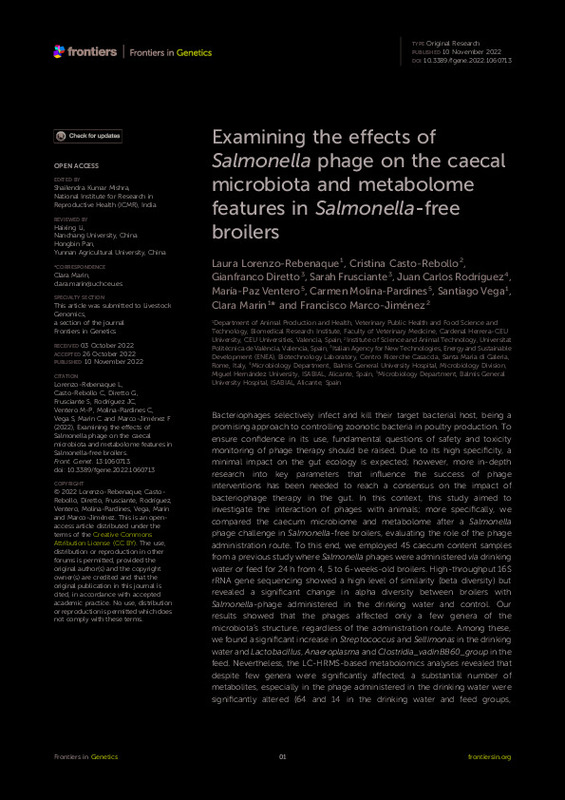JavaScript is disabled for your browser. Some features of this site may not work without it.
Buscar en RiuNet
Listar
Mi cuenta
Estadísticas
Ayuda RiuNet
Admin. UPV
Examining the effects of Salmonella phage on the caecal microbiota and metabolome features in Salmonella-free broilers
Mostrar el registro completo del ítem
Lorenzo-Rebenaque, L.; Casto-Rebollo, C.; Diretto, G.; Frusciante, S.; Rodríguez, JC.; Ventero, M.; Vega, S.... (2022). Examining the effects of Salmonella phage on the caecal microbiota and metabolome features in Salmonella-free broilers. Frontiers in Genetics. 13:1-13. https://doi.org/10.3389/fgene.2022.1060713
Por favor, use este identificador para citar o enlazar este ítem: http://hdl.handle.net/10251/194677
Ficheros en el ítem
Metadatos del ítem
| Título: | Examining the effects of Salmonella phage on the caecal microbiota and metabolome features in Salmonella-free broilers | |
| Autor: | Lorenzo-Rebenaque, Laura Diretto, Gianfranco Frusciante, Sarah Rodríguez, Juan Carlos Ventero, María-Paz Vega, Santiago Molina-Pardines, Carmen Marin, Clara | |
| Entidad UPV: |
|
|
| Fecha difusión: |
|
|
| Resumen: |
[EN] Bacteriophages selectively infect and kill their target bacterial host, being a promising approach to controlling zoonotic bacteria in poultry production. To ensure confidence in its use, fundamental questions of ...[+]
|
|
| Palabras clave: |
|
|
| Derechos de uso: | Reconocimiento (by) | |
| Fuente: |
|
|
| DOI: |
|
|
| Editorial: |
|
|
| Versión del editor: | https://doi.org/10.3389/fgene.2022.1060713 | |
| Código del Proyecto: |
|
|
| Agradecimientos: |
LL-R was supported by a research grant from the Generalitat Valenciana-Fondo Social Europeo (ACIF/2020/376) and by a research mobility grant (IV convocatoria de ayudas para la movilidad internacional de investigadores en ...[+]
|
|
| Tipo: |
|









